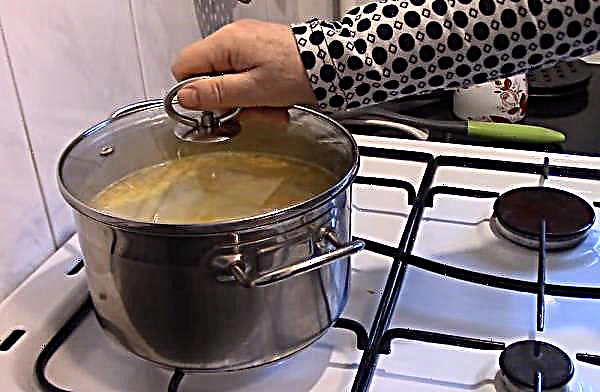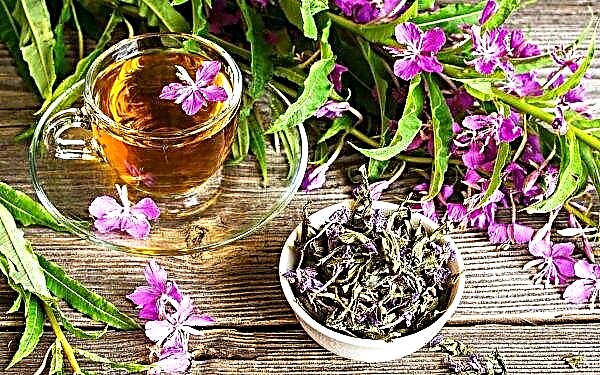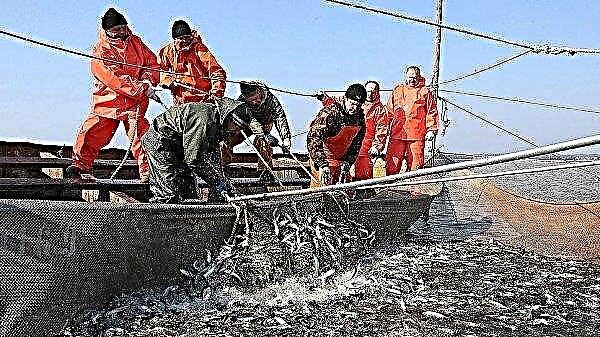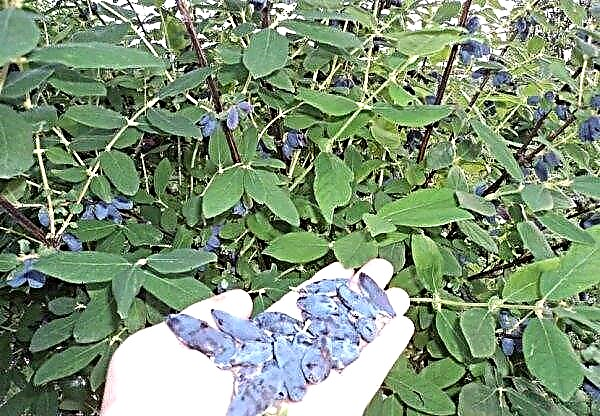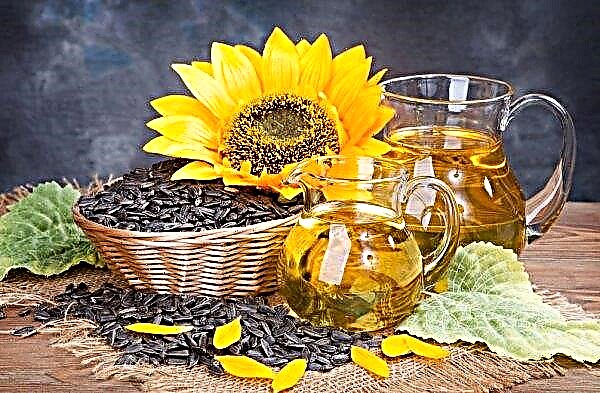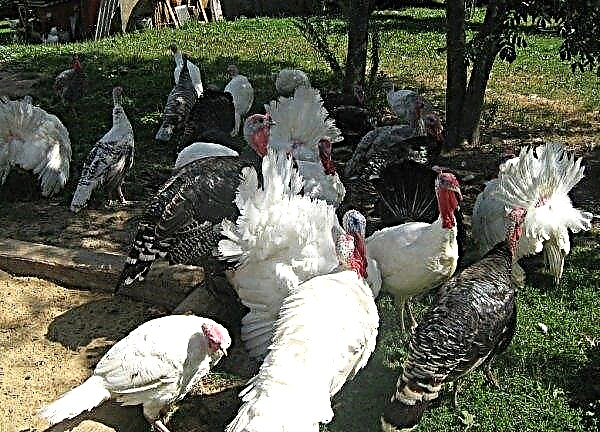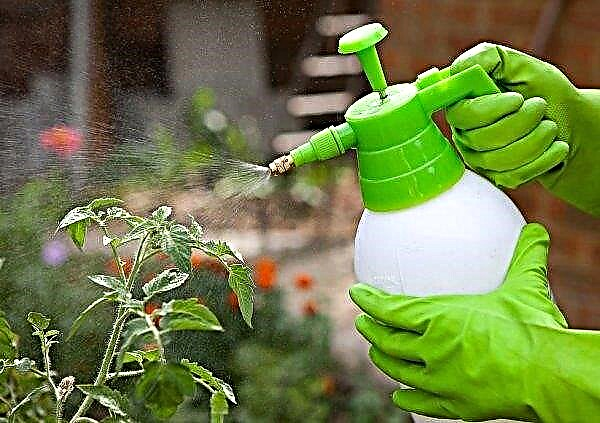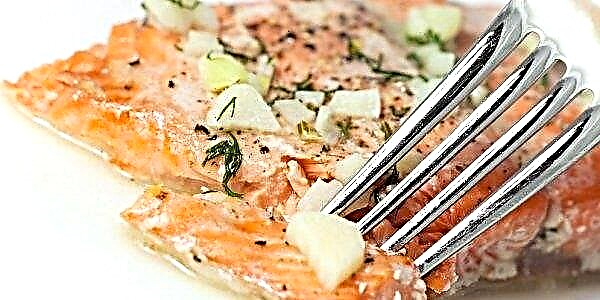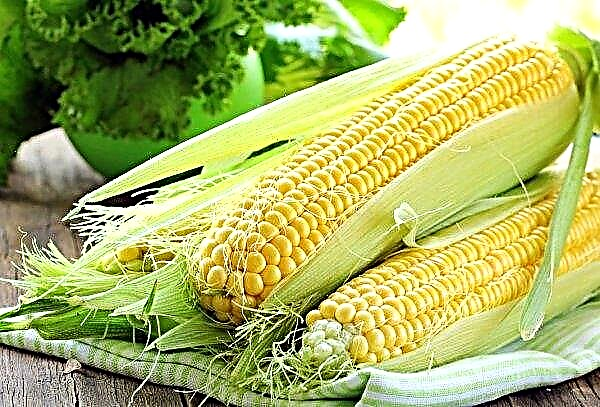Today, the seed market offers a wide range of planting material of various varieties of vegetables. With all this diversity, the consumer is lost and often makes his choice, based on the pictures on the seed packaging and the brief description given. If you are thinking about what kind of cucumbers to plant on your site, we recommend that you pay attention to a variety called Meringue F1. Read more about it in our article.
Description and general description
 Meringue F1 is a variety of Dutch breeding (owned by Seminis agricultural firm). The designation F1 indicates that it is a hybrid.
Meringue F1 is a variety of Dutch breeding (owned by Seminis agricultural firm). The designation F1 indicates that it is a hybrid.
It is a parthenocarpic culture, i.e., self-pollinating (bees are not needed). From this it follows that it can be grown both on open ground and in greenhouses.
The fruits of this hybrid are not very large, up to 12 cm in length, of regular cylindrical shape.
Bushes are tall and srednepletistye, open type, which is very convenient for caring for the plant and harvesting.
Advantages and disadvantages of the variety
- Of the advantages of this variety, the following can be noted:
- high germination and yield;
- precocity
- lack of bitterness in the fruits;
- disease resistance;
- good fruit storage properties;
- suitability for preservation and fresh consumption.
Did you know? In the United Arab Emirates, breeders have long conducted experiments on the shape of cucumbers and developed a new square type. To taste, such square fruits are no different from ordinary fruits, but they are more convenient to transport and store.
- The disadvantages of the hybrid are less:
- there is no way to collect seeds: every year it is necessary to acquire new ones (a feature of breeding species);
- on open ground, plants have lower yield indicators than in greenhouses.
Optimal landing times
When planting in the ground, it is necessary to wait until the soil warms up to + 12 ... + 15 ° C, and the threat of return frosts passes. The optimal time for planting seeds is the end of May.
Planting and growing varieties
Plants can be planted either directly by sowing in the ground, or pre-grow seedlings.
There are no special problems and difficulties in both cases, so you can choose any. And although it will take more time to grow seedlings, but the crop can be obtained earlier.
Important! Seedling method of cultivation is better suited for regions with colder climates.
Soil requirements
Medium loamy breathable soils are suitable for Meringue F1. In this case, you should pay attention to the fact that cucumbers were not grown on this site before (for this variety, it is recommended to plant no earlier than 4 years later).
It is good if before that pepper, cabbage, tomato, onion or potato were growing on the site, since the soil after them will be light and loose. The most suitable soil pH is from 6 to 7.5.
Preparation and technology of sowing seeds in the ground
As a rule, the seeds of hybrids are already treated for fungal and viral diseases of the culture, as evidenced by their colored color, therefore, nothing else needs to be done. Seeds are laid in several pieces in prepared wells at a depth of 2-3 cm.
The distance between the rows should be 50 cm, and between the holes - about 10 cm. Before the appearance of the shoots, the crops should be covered with a film, periodically aerating and watering. When the first leaves appear on the seedlings, the strongest shoots are left, and the rest are removed.
Planting seedlings and tank sizes for her
The capacity for seedlings should be taken 10-12 cm high. As a soil, you can use a mixture in which there will be sawdust, humus and peat. Seeds are laid to a depth of 1.5–2 cm and covered with a film until seedlings appear.
Seedling Care
Water the seedlings as needed. When the first leaves appear, fertilizers can be applied (1 tsp. Nitrophoski or nitroammophoski per 1 liter of water). After 20-25 days, the finished seedlings can be planted in open ground.
A week before planting, you need to start hardening seedlings. To do this, place it in a cooler place (for example, on the balcony or take it out for several hours).
Planting seedlings in a permanent place
It is recommended to plant seedlings from mid-May, when 3-4 seedlings are already on the seedlings. Plants need to be placed at a distance of 30-40 cm from each other. Before planting, seedlings must be watered abundantly.
Cucumber care after planting
Like all cucumbers, this variety loves heat, light and water. Accordingly, you need to monitor the moisture and friability of the soil, as well as the bushes themselves, so that the plants do not obscure each other.
Watering and fertilizing
Watering the Meringue F1 cucumbers requires daily, preferably in the evening and under the bush itself. The water temperature should be + 23 ... + 26 ° C. This variety is very responsive to fertilizers.
Organic and mineral dressings can be used. This can be potassium nitrate, Kristallon cucumber, as well as slurry, bird droppings or complex fertilizers. Feeding can be carried out throughout the growing season, it is best to do this by the method of drip irrigation every 2-3 weeks.Important! Fertilizers for cucumbers should not contain chlorine, since this macrocell slows the growth of leaves.
Garter and bush formation
 Cucumber bushes must be formed to obtain a sufficient amount of light and, accordingly, abundant fruiting.
Cucumber bushes must be formed to obtain a sufficient amount of light and, accordingly, abundant fruiting.
In order for the plant to form properly, you need to remove the stepsons and fruits up to the first 5 leaves, up to 10 leaves leave one green leaf (i.e. the ovary of the fruit), and up to 18 - all green leaves, while removing all side shoots.
Plants are attached to special trellises, which at a height of about 2 m have a special hook. After it, the main stem of the plant is directed down and pinch already on 8–9 leaf. After the hook, leave 3 more shoots with two leaves. Near the hook, the leaves are removed so that they do not create a shadow.
Soil care
Soil care is standard, as with all cucumbers: it needs weeding, weed removal, and cultivation. After each watering, it is necessary to carry out loosening of the soil in order to ensure air flow to the roots of the plant. Weed removal should be regular, as their presence can inhibit the growth and development of the vegetable crop.
Did you know? Cucumbers can be used as a substitute for coffee. The fact is that the minerals and vitamins contained in cucumbers invigorate and contribute to the restoration of strength.
Possible difficulties growing varieties
The Meringue F1 variety is resistant to most diseases of cucumbers: powdery mildew, cucumber mosaic virus and olive spotting. But it has medium resistance to downy mildew (peronosporosis). If the infection did occur, it is worth treating the plants with special agents that can be found in specialized stores (Ridomil Gold, Strobi, Quadrice, etc.).
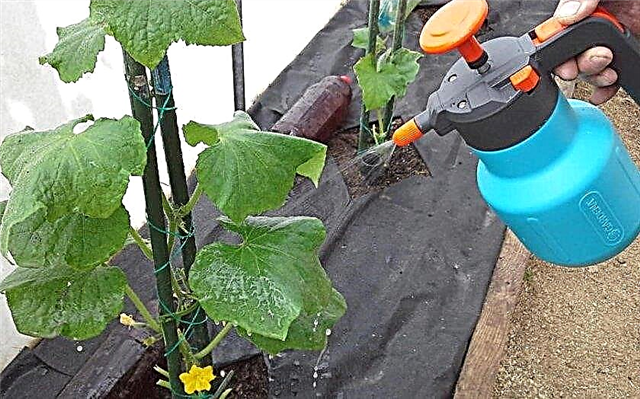
Of the pests, cucumbers are annoyed by ants, slugs, whiteflies, spider mites and gourds. Evidence of the appearance of pests, depending on their type, may be falling or wilting of leaves, the presence of thin cobwebs, larvae or spots of mucus.
From aphids, plants should be treated with the following preparations: Confidor, Fitoverm, Iskra-M. In the fight against the spider mite, spraying with colloidal sulfur or with Tiovit Jet will help. To get rid of ants, you can arrange containers with sweet syrup as traps near cucumber bushes.
Features of harvesting and storage of crops
Harvesting cucumbers Meringue F1 runs from late June to early fall. The first cucumbers can be harvested as early as 40–45 days after planting. Harvest fruits with an interval of 1-2 days. When collecting, the stem cannot be twisted or pulled: it is necessary to carefully cut it with a knife.
Cucumbers with spots or scratches should be removed, as this may be a sign of illness. Fresh vegetables are stored for 1-2 weeks. At the same time they are wrapped in a package to reduce wilting. Another way is to collect the cucumbers along with the stalks and place the stalks down in containers with water. Water needs to be changed every 2-3 days.
Meringue F1 cucumbers have a large number of advantages, the main of which are high productivity and unpretentiousness to growing conditions. They are especially good for growing in greenhouses, which is why they are widely used both in farming and in private gardening.

